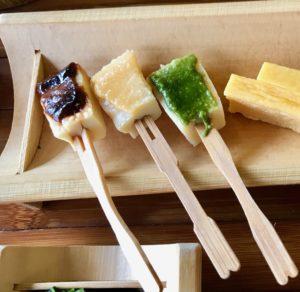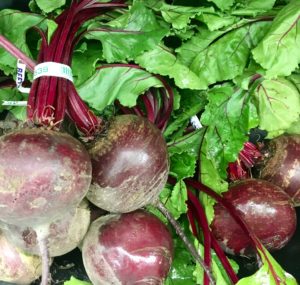The Wonders of Watermelon
There is a sweet simplicity to the name of watermelon. Right from the get-go, it tells you that it is an excellent source of hydration (water-melon), being 92% water. Its high-water composition contributes to its low caloric content. Additionally, watermelon provides 17% of the daily value for vitamin A and 20% for vitamin C, and both vitamins contribute to sustaining your immune system and skin health. It also boasts as an important source of potassium (170 mg in 1 cup) as well as lycopene, containing 40% more than raw tomatoes. Lycopene is an antioxidant that may reduce risk of cancer, cardiovascular disease, and macular degeneration.
It is a cousin to cucumber, pumpkin, and squash. There are over 50 varieties, but the most common are seeded, seedless, picnic, icebox and yellow or orange-fleshed. Red-fleshed are the most regularly seen in grocery stores. Farmer’s markets commonly have watermelon’s in the summer. Try the OSU-OKC Farmer’s Market or the Norman Farmer’s Market at the Cleveland County Fairgrounds.
When picking out a melon, choose one that is firm and symmetrical. Avoid melons that are bruised, dented, or have gashes. Sliced watermelon should be tightly wrapped or in airtight storage container in refrigerator; whole melons can last one week on the kitchen counter.
Watermelons are great for hot, summer days at the park or after soccer practice. Potential meal ideas include using on salads, sandwiches, or blended cold drink.
Below are some recipes for you to enjoy this summer! You can also run by Panera Bread for a hearty watermelon salad.
-WW
Watermelon Greek Salad:
http://www.watermelon.org/Recipes/Greek-Salad
Kid’s Watermelon Strawberry Shake
http://www.watermelon.org/Recipes/Kids-Watermelon-Strawberry-Shake
Greek Pita Flatbread
http://www.watermelon.org/Recipes/Greek-Pita-Flatbread
Cording J. Watermelon. Food & Nutrition. Vol May/June. Chicago, IL: Academy of Nutrition and Dietetics; 2017.







 Looking to beet your current opponent or simply your latest personal exercise record? Beets, or beetroots, are a unique vegetable with a strong taste and intense red color. They are rich in dietary nitrate, folate, and vitamin C. They are notable for their ability to enhance exercise performance. The compound nitrate (NO3–) gets converted to nitric oxide when consumed. Nitric oxide relaxes blood vessels and thereby reduces blood pressure. Nitrate also plays a role in allowing your muscles to become more efficient at using oxygen while exercising. By doing so, your muscles tire more slowly, allowing you to exercise at a higher level for a longer period of time. Oxygen is primarily used during long-lasting, aerobic exercise (aka endurance exercise). This includes various types of exercise such as cycling, running, and swimming.
Looking to beet your current opponent or simply your latest personal exercise record? Beets, or beetroots, are a unique vegetable with a strong taste and intense red color. They are rich in dietary nitrate, folate, and vitamin C. They are notable for their ability to enhance exercise performance. The compound nitrate (NO3–) gets converted to nitric oxide when consumed. Nitric oxide relaxes blood vessels and thereby reduces blood pressure. Nitrate also plays a role in allowing your muscles to become more efficient at using oxygen while exercising. By doing so, your muscles tire more slowly, allowing you to exercise at a higher level for a longer period of time. Oxygen is primarily used during long-lasting, aerobic exercise (aka endurance exercise). This includes various types of exercise such as cycling, running, and swimming. compromising our health goals. There are many options in our city that we can enjoy and not feel guilty about it. Luckily, many of our favorite places have nutritional facts we can access from our phone to make better decisions on the fly. Another good resource is the app called MyFitnessPal, which has a vast amount of food and restaurant selections all in one place.
compromising our health goals. There are many options in our city that we can enjoy and not feel guilty about it. Luckily, many of our favorite places have nutritional facts we can access from our phone to make better decisions on the fly. Another good resource is the app called MyFitnessPal, which has a vast amount of food and restaurant selections all in one place.